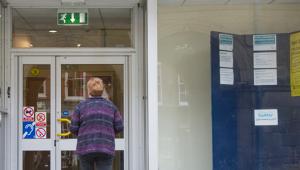This represented a fall of 16,000 from the first three months of the year, while public sector employment was down 59,000 over the last 12 moths.
The bulk of the fall was in local government, which lost 13,000 employees over the quarter. Local government employment was 2.3 million, the lowest since 1999.
In central government, employment was down only 1,000 over the quarter and was 2.9 million. Employment in UK public corporations was down 2,000 to 179,000.
Meanwhile, private sector employment was up 58,000 over the quarter.
In the wider economy, unemployment remained at 5.5% over the three months to July, unchanged from the preceding three-month period.
Today’s labour market statistics also show little change to the employment rate, which was at 73.5% over May-July, a post-crisis high.
The picture was improved on a year ago when unemployment was at 6.2% and employment at 72.8% over the same period.
However, the absolute number of people out of work rose in the May to July period by 10,000 to 1.82 million.
Compared to 2014, both total pay (which includes bonuses) and regular pay (which discounts bonuses) were up by 2.9%.
The Department for Work and Pensions highlighted that almost 90% of the rise in employment had been from full-time vacancies, while pay had experienced the fastest annual rise since 2002.
Employment minister Priti Patel said: “With a record number of people working in the private sector and wages rising, it is clear that the remarkable jobs success that we have seen under this government is continuing.”
Commenting on the figures, Matthew Whittaker, chief economist at the Resolution Foundation said the boosts to employment and pay were “hugely welcome”.
But he added: “Every month of above-trend pay growth helps to close the earnings gap that opened up over the course of the six-year pay squeeze. But ultra-low inflation – while proving a boon to workers in the short-term – is doing too much of the work.
“Even if the current pace of real wage growth is maintained – by no means a given with nominal pay growth remaining subdued – average earnings won’t return to their pre-crisis peak until 2017. As inflation starts to pick up again, we may find that the current period of catch-up earnings growth proves all too short lived, meaning that pay recovery will take longer still.”
But he warned of likely recruitment and retention problems in the public sector where earnings growth has been constrained by the government’s pay cap policy – a trend that was likely to continue.
Public sector recruitment “could prove to be one of the key challenges facing the government in the next five years” Whittaker said.
Yesterday the Office for National Statistics announced the Consumer Prices Index measure of inflation had fallen back to 0.0% in August, down from 0.1% in July.




















